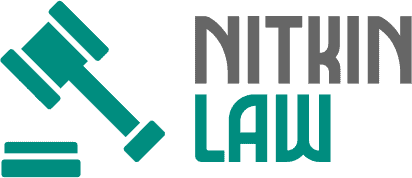
Distracted driving has become a significant contributor to accidents on the road. With the increasing use of mobile devices and other distractions while driving, it’s crucial to understand the legal implications for those involved in distracted driving accidents. Liability, in particular, is often complex, as distracted driving accidents can involve multiple factors and even multiple parties. In this blog post, we’ll break down what constitutes distracted driving, explore who may be held liable in such cases, and what victims can do to protect their rights.
What is Distracted Driving?
Distracted driving encompasses any activity that diverts a driver’s attention away from the road. The National Highway Traffic Safety Administration (NHTSA) defines three main types of driver distraction:
- Visual Distraction: Anything that takes the driver’s eyes off the road, such as looking at a mobile phone, checking GPS, or even adjusting the radio.
- Manual Distraction: Actions that take the driver’s hands off the wheel, like eating, drinking, or reaching for something in the car.
- Cognitive Distraction: Situations where the driver’s mind isn’t focused on driving. This can include daydreaming, talking on the phone (even hands-free), or dealing with emotional stress.
When one or more of these distractions occur, the driver’s ability to make timely decisions and react to hazards on the road is impaired, often leading to accidents. But who bears the responsibility if an accident occurs due to distracted driving?
Determining Liability in Distracted Driving Accidents
Liability in distracted driving accidents typically rests with the driver who engaged in the distracting behavior. However, establishing liability requires evidence that the driver’s distraction directly caused or contributed to the accident. Common forms of evidence include mobile phone records, eyewitness accounts, and sometimes video footage from traffic cameras.
Beyond the driver, liability may also extend to other parties, depending on the circumstances. Here are some common scenarios where liability can become complicated:
The Distracted Driver’s Responsibility
In most cases, the driver who was distracted holds primary liability. Courts often rely on evidence like mobile records, witness testimonies, and police reports to determine if the driver was distracted. For instance, if you’re hurt in a St. Louis distracted driving accident, understanding local traffic laws and consulting with legal counsel can be critical in building a strong case for compensation. A personal injury lawyer can assess your case, identify relevant evidence, and help determine the liable party or parties.
When Passengers or Other Drivers Are at Fault
In some cases, passengers or even other drivers may play a role in distracted driving incidents. For example, if a passenger is actively distracting the driver — by arguing, demanding the driver’s attention, or interfering with the controls of the vehicle — they may share some responsibility for an accident. Similarly, if another driver on the road is engaging in erratic behavior, causing nearby drivers to become distracted, they too might bear partial responsibility.
Employers’ Responsibility in Distracted Driving Cases
Employers can also be held liable if the driver involved in a distracted driving accident was performing job-related duties at the time of the incident. This is especially common with commercial drivers or delivery personnel who are under pressure to meet tight schedules. Employers may face liability if they’ve encouraged or required employees to take calls, respond to messages, or use devices while driving, particularly if these expectations are unreasonable or compromise safety.
Proving Liability in Distracted Driving Cases
Proving liability in a distracted driving case can be challenging, as it requires concrete evidence that the distraction directly caused the accident. Here are some of the most effective methods used to establish liability:
- Mobile Phone Records: Phone records can reveal whether the driver was engaged in a call, text, or internet activity at the time of the accident. These records often serve as compelling evidence in court.
- Eyewitness Accounts: Eyewitnesses who saw the accident unfold can help corroborate claims that a driver was distracted. They may have seen the driver looking at their phone, reaching for something, or engaging in any other distracting behavior.
- Surveillance or Traffic Camera Footage: Many urban areas have traffic cameras that capture footage of major intersections. This footage can provide invaluable visual evidence of a driver’s behavior in the moments leading up to the accident.
- Vehicle Data: Many modern vehicles are equipped with technology that logs driver actions, including speed, braking patterns, and more. In some cases, this data can reveal signs of distraction or delayed reaction times.
By gathering these pieces of evidence, victims of distracted driving accidents can strengthen their claims and improve their chances of receiving compensation for injuries, damages, and losses.
Steps for Victims of Distracted Driving Accidents
If you’ve been injured in a distracted driving accident, it’s essential to take certain steps to protect your rights and seek compensation:
- Seek Medical Attention: Your health and safety should be the top priority. Even if your injuries seem minor, getting a medical evaluation can help document your injuries, which may be crucial for your claim.
- Document the Accident: Gather as much information as possible at the scene, including photos of the vehicles involved, any visible injuries, and road conditions. If there are witnesses, collect their contact information.
- Report the Accident to the Authorities: A police report will create an official record of the accident and is an essential piece of evidence when proving liability.
- Consult with an Attorney: Navigating the complexities of distracted driving cases often requires legal expertise. An attorney can guide you through the process of building a strong case and pursuing compensation.

Understanding liability in distracted driving accidents is essential for all road users. While the distracted driver is typically held responsible, there are cases where liability may extend to passengers, employers, or other drivers. Victims of such accidents must take steps to gather evidence, document their injuries, and seek appropriate legal guidance. By holding responsible parties accountable, victims can seek the compensation they deserve while also contributing to safer driving practices.

